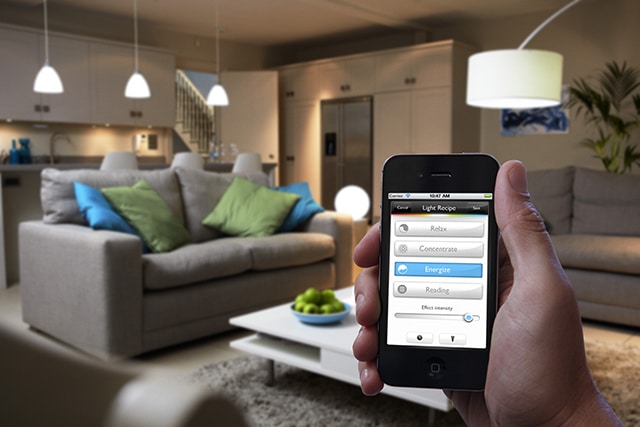Smart lightbulbs aren’t anything new. In fact, products like the Philips Hue bulb have been in the market for years. The devices, which typically couple a standard incandescent or CF bulb with a wireless transmitter, allow lights to be managed via mobile device and also respond to environmental changes monitored by other sensors.
But – as with much of the Internet of Things – each family of smart bulbs is something of an island: interacting- and communicating mostly with other smart home products from the same manufacturer. That’s good for the lightbulb maker, but bad for smart home advocates, see out-of-the box connectivity across product silos as a precursor to broad adoption of smart home technologies.

It’s also been the case that the products that have been released have often fallen short in areas like security. In August, 2013, security researcher Nitesh Dhanjani disclosed a proof of concept hack against Philips HUE lightbulbs that allows a remote attacker to use her mobile device to control HUE bulbs. Then, in July, researchers at Context discovered that smart bulbs could be used as a stepping stone in attacks. By gaining access to a “master bulb” in LIFX smart bulb deployments, they could control all connected lightbulbs and expose user network configurations.
On Tuesday, the AllSeen Alliance took a step towards sanity in the smart lightbulb space. The cross-industry group announced the Connected Lighting Working Group to develop ways for IP-enabled light bulbs to interoperate based on open standards. The group is developing Lighting Services Framework (LSF) as part of AllJoyn, the open source project for connecting “smart” devices such as televisions, home security systems, home appliances, smoke detectors and door locks.
The LSF, when complete, will enable connected devices and lights from different manufacturers to interoperate and provide APIs (Application Program Interfaces) that let third-party developers build new applications to control smart lighting, regardless of manufacturer.
“Connected lighting has the potential to be one of the most dramatic applications of the Internet of Everything in homes and businesses,” said the Lighting Working Group’s chair, Marc Alexander, CTO at smart lighting company LIFX, an AllSeen Alliance member. “To meet that potential, lights need the ability to proximally discover one another and other things regardless of brand, platform or OS. That’s why there is a strong need in the market for a connected lighting framework based on open standards.”
Announced in 2013, the AllSeen Alliance is an outgrowth of the Linux Foundation and counts major IT infrastructure providers software publishers and electronics firms as members. The group is working to develop and promote AllJoyn as a common, open source platform that allows hardware and software firms to unite their creations, regardless of their brand – and provide basic security features, to boot.
The Alliance counts electronics giants like Panasonic, Qualcomm, LG and Sharp as members. Other charter members include retail giant Sears and networking equipment maker Cisco Systems. In July, Microsoft announced that it was joining the group, as well.
Read more via AllSeen Alliance Launches Initiative to Advance Smart Lighting – AllSeen Alliance.
